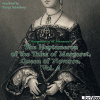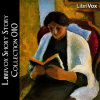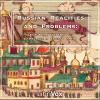Marguerite of Navarre - Heptameron of the Tales of Margaret, Queen of Navarre, Vol. 1
Marguerite of Navarre
THE HEPTAMERON, first published posthumously in 1558, is divided into seven complete days containing 10 stories each, and an eighth day containing only 2 stories. The stories, many of which deal with love and infidelity, resulted in «accusations of looseness» by critics of the day. The author, Margaret of Navarre (also known as Margaret of Angoulême) became an influential woman in the intellectual and cultural circles of the French Renaissance.
From an 1892 essay by the translator George Saintsbury: «In so large a number of stories with so great a variety of subjects, it naturally cannot but be the case that there is a considerable diversity of tone. But that peculiarity at which we have glanced more than once, the combination of voluptuous passion with passionate regret and a mystical devotion, is seldom absent for long together...The question, What is the special virtue of the Heptameron? I have myself little hesitation in answering. There is no book, in prose and of so early a date, which shows to me the characteristic of the time as it influenced the two great literary nations of Europe so distinctly as this book of Margaret of Angoulême…
It combines a profound and certainly sincere—almost severe—religiosity with a very vigorous practice of some things which the religion it professes does not at all countenance. It has an almost morbidly pronounced simultaneous sense of the joys and the sorrows of human life, the enjoyment of the joys being perfectly frank, and the feeling of the sorrows not in the least sentimental. It unites a great general refinement of thought, manners, opinion, with an almost astonishing occasional coarseness of opinion, manners, thought…There, in a few words, is the secret of THE HEPTAMERON: the fear of God, the sense of death, the voluptuous longing and voluptuous regret for the good things of life and love that pass away.» (Summary adapted from Wikipedia and excerpted from the text by lubee930)















No comments